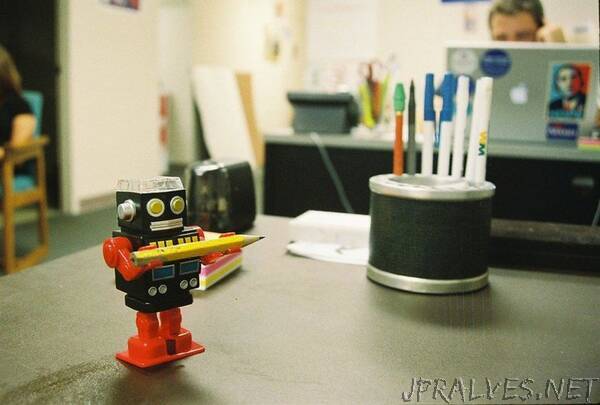
“If ‘design is intelligence made visible’, as author and brand consultant Alina Wheeler has framed it, then artificial intelligence (AI) and design should make a perfect match. New research shows that AI assistance can indeed create better designs, at least in simple simulated cases. The challenge for designers, and users of AI tools more generally, is clear communication of goals that initially may be nebulous. At the Finnish Center for Artificial Intelligence (FCAI), researchers are addressing this challenge by building AI that can understand human goals, without large training data sets, lengthy learning cycles or rigid optimization.
Unlike, say, Amazon, which uses your shopping behavior and data from millions of customers to make targeted recommendations, tools for design, especially bespoke or highly specific projects, must take other approaches when it comes to incorporating AI. ‘In our research, a user model, based on cognitive science research of decisions, takes the place of big data,’ says Sebastiaan De Peuter, a doctoral researcher at FCAI and Aalto University’s Department of Computer Science. ‘This significantly reduces what an AI system needs to learn.’ De Peuter’s research is particularly focused on linking up new AI systems with user models that let them infer and adapt, rather than just recommend, especially when interacting with designers, for example in fields like mechanical engineering or drug design.
A user model can be thought of as a way for a machine to understand human reasoning and its limitations, says De Peuter. ‘Human mistakes are not random. They are caused by biases and bounds, like limited memory and attention.’ When these mistakes are reproduced in a model, it’s a snapshot of realistic human behavior that an AI can use to understand the goals and beliefs of users. A user model can also help overcome the mismatch between how current AI systems approach tasks—as well-defined optimization problems—and open-ended tasks such as design where people generate solutions in steps, adjusting their goals along the way. ‘Designers don’t produce things in one shot, but in stages, thinking about what they want from the design, and the design itself, in a loop,’ De Peuter explains. ‘People are not machines: their decisions can only be understood in the context of their biases and limitations, and they require contextualised human-intelligible communication. This is why inserting a human decision-maker into an AI framework is so hard.’
What’s more, previous research has shown that, while AI can help designers find better solutions, for example in selecting virtual reality interaction techniques, people felt that the creativity and control of the process was compromised. De Peuter and colleagues think that a balance of autonomy and assistance is the key to maintaining human agency while gaining the speed and efficiency benefits of AI.
They demonstrate this in a simplified design problem: planning a day trip in Paris. ‘An enjoyable day sightseeing’ may be a vague goal for a person, let alone an AI, but it turns out that a system that knows a little about human biases and can learn by observing their choices, combined with a little automation, produces better designs, in this case trip plans, than purely automated systems. ‘People tend to want to stick to the familiar, like a proven trip plan that isn’t too radical. That’s what we call an anchoring bias,’ explains De Peuter. ‘When we build in the capacity for the system to infer people’s biases, it outperforms, for example, inverse reinforcement learning, and improves the quality of advice provided to the user.’
The result allows the trip planner, or designer more broadly, to make high-level decisions, while the AI assistant will tackle the small tasks that make up most of the work—for example, safely assuming that no trip to Paris is complete without a visit to the Eiffel Tower. ‘Currently, the job of designers is to learn how to work with AI tools,’ say De Peuter. ‘With AI-assisted design, designers should be able to stop worrying about what the tool will do, because it will be in the background.’ He estimates that, in this simulated design task of planning a trip, about one-third of the designer’s effort, such as decision-making steps and iterations, is saved thanks to AI assistance.
However,De Peuter says this type of AI assistance will probably not be used to design handbags or cars, because they are one-off cases where the cost of representing and evaluating designs with AI vastly outweighs the benefit. ‘AI assistance is best applied to scientific or engineering fields that have the foundation for deploying AI-assisted design in a worthwhile way. In drug design, where you produce multiple drugs and the chemistry is the same, you can reuse AI systems easily. The investment required in building these systems means they are most useful in repeated use, not for one-off design problems,’ De Peuter clarifies.
Ultimately, AI-assisted design is about improving the productivity of designers. ‘Recommendation systems offer more of the same, exploiting what is already known, but good design needs exploration,’ says De Peuter. ‘An AI assistant can improve existing designs in small steps or explore the space more broadly, which is harder for people. It’s a tradeoff between effort and maximizing quality, with AI pulling up one strap and humans controlling the other.’
‘Helping designers is an important instance of our even broader mission, of building AI that is able to help humans reach their goals, even when they are initially unclear or evolving, as they often are in decision making, design and modeling. This work really shows the value of our collaboration at FCAI, ELLIS Unit Helsinki and my UKRI Turing AI World-Leading Researcher Fellowship program,’ says Samuel Kaski, professor at Aalto University’s Department of Computer Science, director of FCAI and the senior author of this research.”
